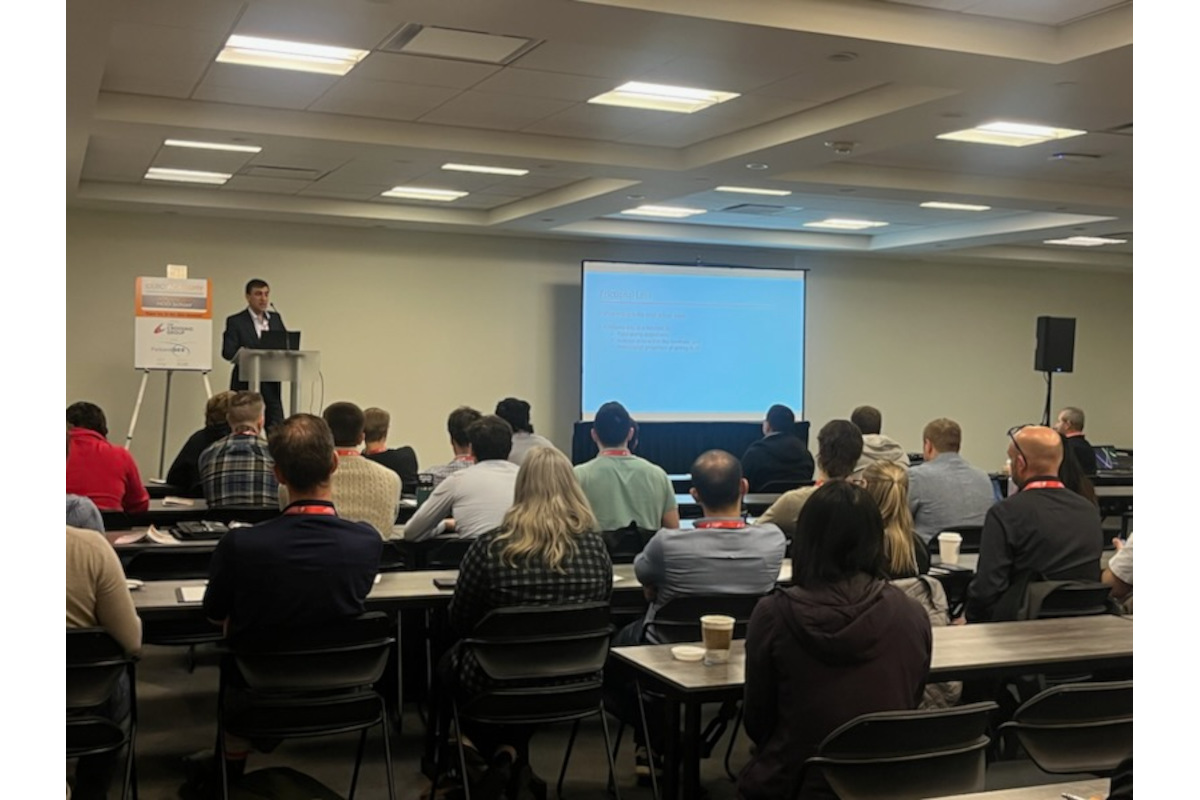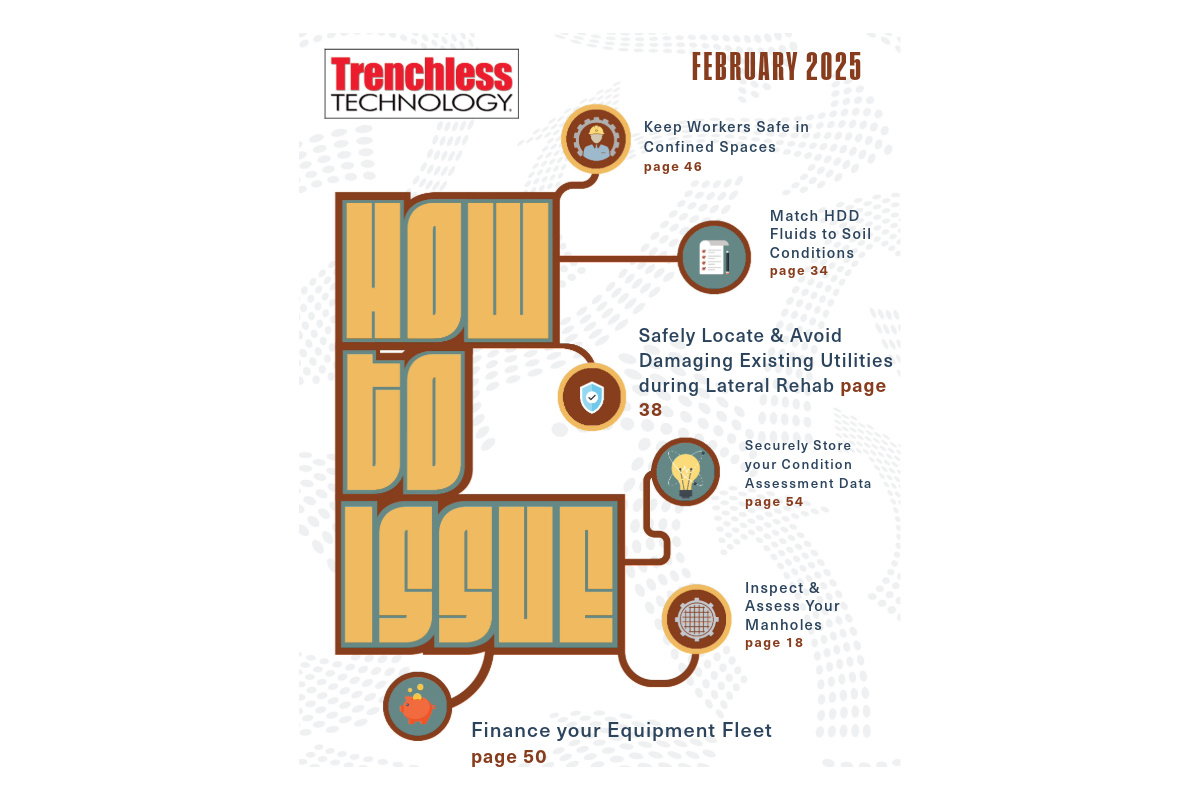Taking Care of Business
January 19, 2012
The Underground Solutions Team: (l-r)
Frank Firsching – Executive Vice President of Sales
Roop Jain – Executive Vice President, Chief Operating Officer
Andy Seidel – Chief Executive Officer, President
Raj Patel – Executive Vice President, Chief Financial Officer
Steve Stanczak – Executive Vice President
 Underground Solutions took a big leap of faith in 2005, nearly 10 years after founding as a small technology company. The provider of Fusible PVC products to the water and wastewater industries decided to hire new names and expand the company, ultimately moving from Pennsylvania to California.
Underground Solutions took a big leap of faith in 2005, nearly 10 years after founding as a small technology company. The provider of Fusible PVC products to the water and wastewater industries decided to hire new names and expand the company, ultimately moving from Pennsylvania to California.Andy Seidel helped with this transition. He was formerly CEO of USFilter, which he helped grow into one of the largest water-treatment companies in the United States ($5 billion in annual sales), part of which was eventually acquired by Siemens in 2004 for almost $1 billion. During his 10 years at USFilter, Seidel became intrigued by the business opportunities in underground infrastructure rehabilitation.
“It was apparent that the under-investment in the underground infrastructure of distribution and collection systems would have to be dealt with at some point,” Seidel says, noting that cities were afraid to make these improvements due to cost and inconvenience of open-cutting city streets. “It always seemed more exciting to build a new water plant with advanced membrane systems, and no one ever seemed to care about what happened to the quality of that pure water once it was sent through miles of 100-year-old water mains to users.”
So when USFilter was sold, Seidel and members of the original management team explored building a business within the rehabilitation space. They founded Underground Solutions (UGSI) and were impressed with the technology.
“The company had done a great job at developing a fused PVC solution for water and sewer line rehabilitation, which dramatically improved costs vs. incumbent materials,” Seidel says. “The company had not done as good a job at raising capital and penetrating the market with the very strong value proposition.”
With their experience growing USFilter from $20 million to more than $5 billion in eight years, Seidel and his colleagues felt comfortable dealing with growth issues in the water business. They joined UGSI in 2005, moved the headquarters from Pittsburgh to San Diego and immediately got to work. Since January 2006, the company has been growing at a rate of 30 percent per year and employment has more than quintupled, they say.
Tom Marti, vice president of engineering and technology, has been with UGSI since 2002, long before the big move. He says USFilter’s clear approach to the municipal water market really moved things along in a good way.
“[UGSI] went from a startup searching for a way to market an innovative technology to a fast-growing company able to educate owners, engineers and contractors on the benefits and use of Fusible PVC,” Marti says.
It took more than six months to get the first mile of Fusible PVC bid, manufactured and installed. Now shipping out one mile of pipe happens nearly every day. The product speaks for itself, says Seidel, now CEO and president of UGSI.
“The water industry has always been slower on the adoption of new technologies, but that inertia also works in favor of a product once it has proven itself,” Seidel says. “We think we’re over the hump of becoming a proven product.”
Frank Firsching was president of the $1 billion water and wastewater systems group at USFilter when he joined UGSI as executive vice president of sales. He says that because USFilter was constantly innovating, this experience helped the new UGSI leadership launch Fusible PVC in the water and wastewater markets.
 “In a few short years we’ve taken an innovative technology and penetrated a very conservative market that is typically slow to adopt new technologies,” Firsching says. “To have 5,000 installs today with millions of feet of pipe in the ground in such a short time has been a significant achievement. I think the speed of market penetration speaks to the disruptive nature of the technology, the demand for different pipe system options in trenchless installation and the savings the technology delivers.”
“In a few short years we’ve taken an innovative technology and penetrated a very conservative market that is typically slow to adopt new technologies,” Firsching says. “To have 5,000 installs today with millions of feet of pipe in the ground in such a short time has been a significant achievement. I think the speed of market penetration speaks to the disruptive nature of the technology, the demand for different pipe system options in trenchless installation and the savings the technology delivers.”UGSI offers PVC pipe combined with a fusion process, producing monolithic plastic pipe that can be used in trenchless and open-cut installations. The company’s Fusible PVC line has a higher tensile strength and hydrostatic design basis than other plastic pipe materials, giving it substantial cost advantages in the form of mobilization savings (longer pull-in lengths), material savings (thinner walls, less weight for given pressure class) and upsizing possibilities (more flow capacity for a given outer diameter). Using Fusible PVC can save utilities tens of millions of dollars, Seidel says.
“Since PVC is the most common pipeline material in use in North America, fittings and reconnection hardware is readily available in most utility yards or supply house yards — making repairs, additions and installations even more economical,” he says.
A recent adopter, the Consolidated Mutual Water Co. in Lakewood, Colo., has been able to save money with the use of Fusible PVC. The company replaced 27,000 ft of water main in 2010, 34,000 ft in 2011 and expects to replace 40,000 ft in 2012 using UGSI’s products.
“We have been very aggressive with our pipe replacement program, and with the use of Fusible PVC along with the pipe bursting methodology for the installation, we have saved millions of dollars,” says Consolidated Mutual Water president Michael Queen. “I feel like Consolidated has a very strong and good partner relationship with Underground Solutions, and with the continued support of UGSI, Consolidated crews will continue to push the envelope when it comes to pipe installation anytime and anywhere.”
UGSI also produces Duraliner, similar to the Fusible line but with the ability to tailor-make a close-fit solution that provides a stand-alone pressure rating of the previously compromised host pipe.
“The common theme across the globe is that underground infrastructure is degrading at an alarming rate, and utilities and their engineers are looking for solutions with companies that can offer innovation resulting in cost-savings and simplicity,” Seidel says, adding that UGSI’s successful installations in 48 U.S. states, plus New Zealand, Canada, Mexico and the Pacific Islands show that the company produces a great product that works and saves money — regardless of geography.
Mears Group Inc. has installed several Fusible PVC pipelines in major HDD crossings. Mears senior vice president Neil Smith says these crossings might not have been possible using other thermoplastic materials. One such crossing consisted of a 5,120-ft long, 10-in. pipe in South Carolina.
“The [crossing] had been found not to be economically feasible using either steel or other plastic pipe with conventional contracting arrangements,” Smith says. “Mears has enjoyed an excellent working relationship with UGSI. Their attention to detail and sincere concern for the success of a project has been evident in all our dealings with them.”
Not expanding into an overly broad approach helps UGSI focus more on customer support, Marti says.
“While we don’t design pipeline projects, we provide full technical and application guidance and support to engineers, contractors and owners,” he says. “We also do not install our product but fully support the contractors doing so through a group of construction and operations personnel. It is difficult to find a company with these support capabilities that go outside their core technologies.”
Although trenchless technology has become more accepted, Seidel says it’s still not as well understood as it could be by engineers and utilities. That’s why UGSI is involved with different organizations like the North American Society for Trenchless Technology (NASTT) and industry tradeshows. The company also provides support to research institutions like the University of Arizona, the Water Research Foundation and Louisiana Tech.
“The adoption of pipe bursting and sliplining as rehabilitation techniques is woefully slow,” he says. “These two techniques are under-represented in technical conferences and papers, which probably affects their consideration in the field. Higher levels of adoption of both techniques could dramatically improve the replacement rates and lower the cost of pipeline rehabilitation across the country.”
UGSI spends more than $1.5 million per year on third-party testing, research and development and product development, an amount Seidel says is “unmatched in the business.” More than 25 engineers allow the company to exploit the technical advantages of its products.
“The pipeline business is filled with individuals and firms that make promises and claims based on very thin and sometimes nonexistent technical data,” Seidel says. “We differentiate ourselves by backing our claims and promises with strong research and actual performance in the field.”
Seidel says UGSI aims to be more focused on providing more infrastructure solutions in the coming years. They recently acquired a company that is a specialist in the application of high performance coatings and linings to various pipe materials.
“While growth by acquisition is not viewed as a core element to our current strategy,” Seidel says, “we continue to be vigilant and keep our options open when it comes to adding new technologies to our portfolio.”
 The company also plans on growing internationally. Licensees and partners have been signed in Latin America, Canada and New Zealand in the past few years.
The company also plans on growing internationally. Licensees and partners have been signed in Latin America, Canada and New Zealand in the past few years.Nevertheless, the key focus continues to be the development of the North American market. Firsching says the sales staff will make more than 6,000 face-to-face sales calls this year.
“UGSI is a very nimble company, which makes it easy to rapidly adjust and apply new approaches based on what we see and learn in the market,” he says. “Regardless of the size of the business, the fundamentals remain the same with regard to employing best business practices and hiring and training smart people who know how to win in a highly competitive market.”
UGSI took the right steps into the competitive market in 2005 when it hired and trained a new breed of smart people, proving change is good for business.
Kelly Pickerel is assistant editor of Trenchless Technology.




